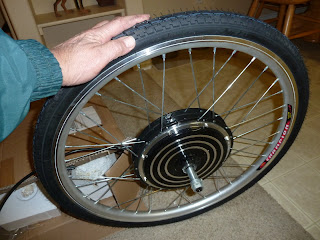To get the battery sockets to fit together better I used a small round carbide bit to gouge a couple of holes in the plastic sockets. This will allow the solder terminals to fit into the gouged holes to get the battery packs to fit into the battery compartment of the bag.
A "Kick Back" Diode needs to be placed across each batteries terminals on the battery socket to prevent the burning out of the BMS incorporated into each of the Lithium batteries.
In the event that any of the individual battery management systems is to shut down a battery while under a load there will be a very brief back voltage and current trying to back flow into the remaining batteries that are still connected in the 3 remaining battery arraignment. A 50 volt, 10 Amp, Schottky Diode across each battery will prevent the back flow of current into any remaining battery BMS still under load at the time of battery circuit interruption.
I used a small carbide grinding tool to make a pocket for the diode to set inside of the solder terminal area of each battery socket.
The Red paint demotes the Positive terminal of the solder terminal, the banded end of the diode will connect to this Red terminal. This will only allow current flow in the reverse direction, like when "kick back" would occur.












































